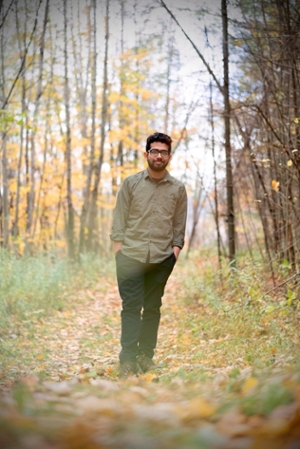Department of Electrical and Computer Engineering Ph.D. Public Defense
Nonlinear Shear Modulus Imaging with freehand tissue deformation and under the effect of tissue viscoelasticity
Soumya Goswami
Supervised by Professor Stephen McAleavey
Tuesday, April 19, 2022
Noon–1 p.m.
https://rochester.zoom.us/j/93270356511

Imaging of tissue mechanical properties has shown promise in non-invasive evaluation of diverse pathologies. While there has been considerable research on imaging linear tissue mechanical properties in laboratory and clinical settings, little research has been done to image the nonlinear tissue mechanical properties. Recently, research on multiple complex nonlinear mechanical effects such as frequency- dependence, anisotropy and nonlinear elasticity are gaining prominence. However, imaging of these nonlinear mechanical properties are challenging particularly for deep organs. In this study, we first propose a tissue nonlinear elasticity imaging method combining strain and shear wave elastography. This method produces high contrast non-linear elastograms under conditions of pure uni-axial compression but, exhibit bias errors of 10-50 % when the applied deformation deviates from the uni-axial condition. Since freehand transducer motion generally does not produce pure uniaxial compression, a motion-agnostic non-linearity estimator is desirable for clinical translation. Here we derive an expression for measurement of the Non-Linear Shear Modulus (NLSM) of tissue subject to combined shear and axial deformations. Further, we developed a nonlinear elastography model that combines strain measurements from arbitrary tissue deformation with radiation-force based broadband shear wave speed measurements. Again, shear wave measurements are highly influenced by other tissue mechanical properties like tissue viscosity. Hence, a concurrent assessment of these complex effects may enable a more complete characterization of tissue biomechanics and offer improved diagnostic sensitivity. In this work we report for the first time a method to map the frequency-dependent nonlinear parameters of soft tissues on a local scale. Here, we extended this model to incorporate local measurements of frequency-dependent shear modulus. This combined approach provides a local frequency dependent nonlinear parameter that can be obtained with arbitrary, clinically realizable tissue compression. Initial assessments using simulations and phantoms validate the accuracy of this approach. We also observed improved contrast in nonlinearity parameter at higher frequencies. Results from ex-vivo liver experiments show 32 dB, 25 dB, dB, 34 dB, and 38 dB higher contrast in elastograms than traditional linear elasticity, elastic nonlinearity, viscosity and strain imaging methods, respectively. A lesion, artificially created by injection of glutaraldehyde into a liver specimen, showed a 59% increase in the frequency dependent nonlinear parameter and 17% increase in contrast ratio.
